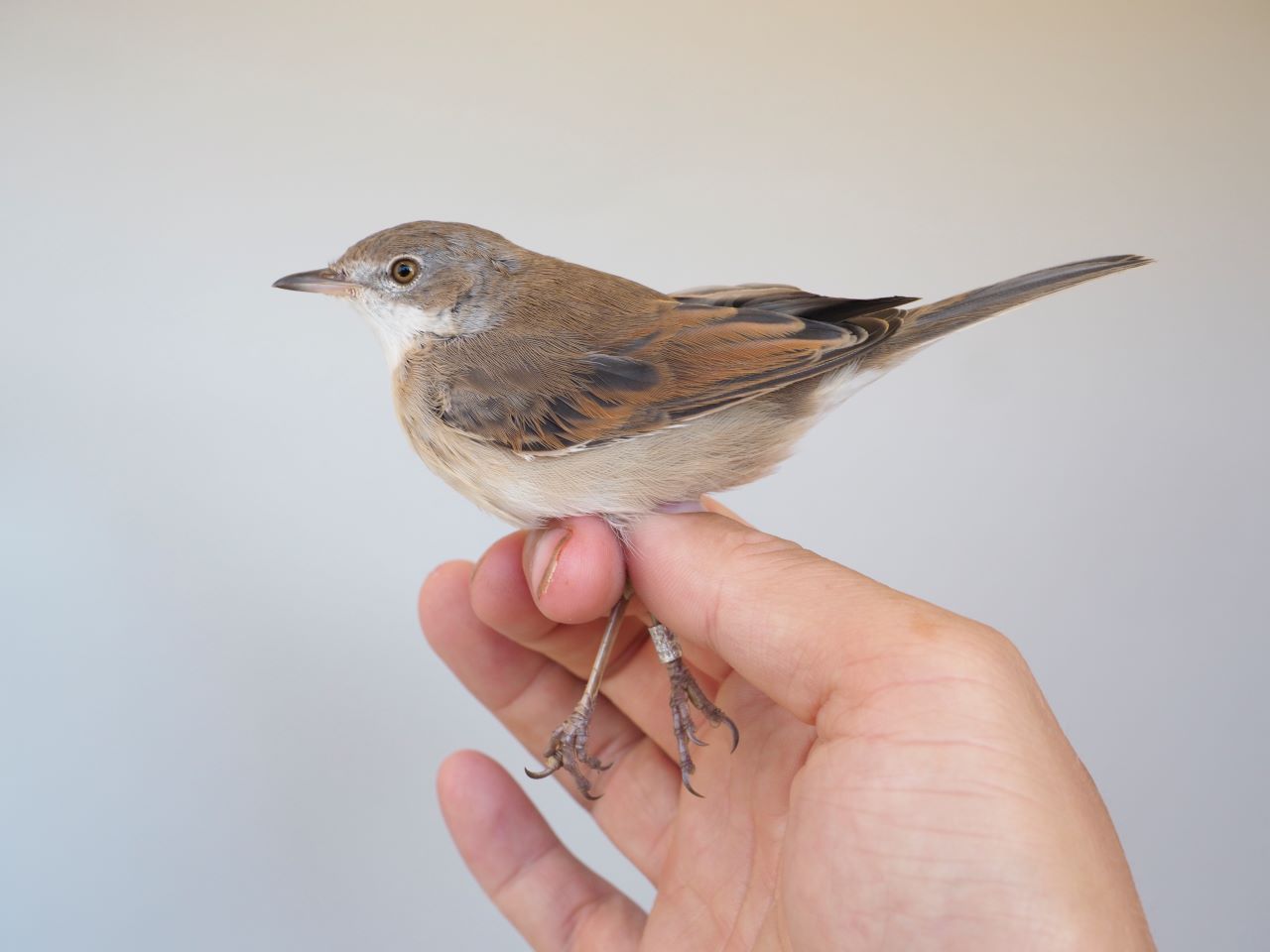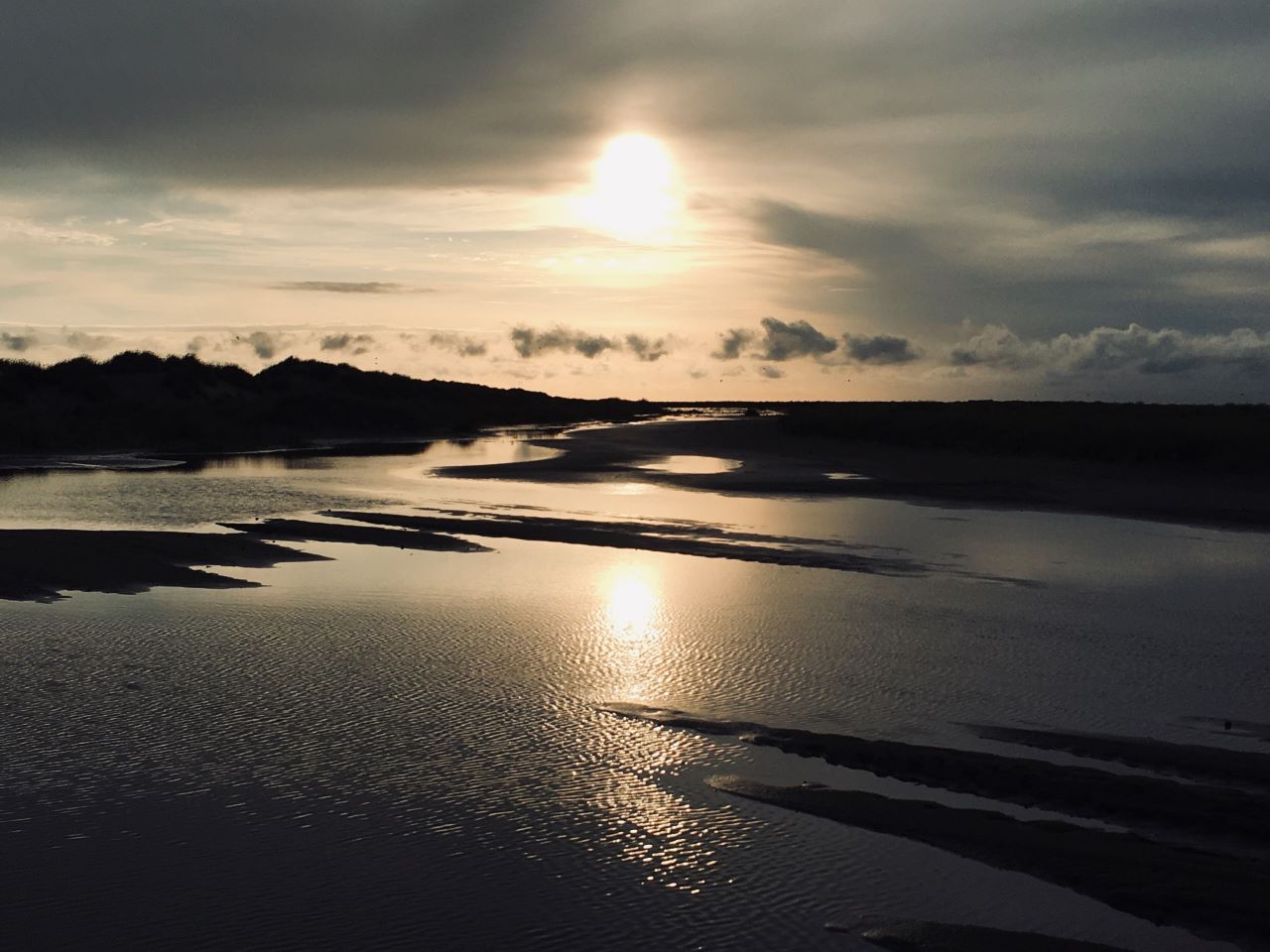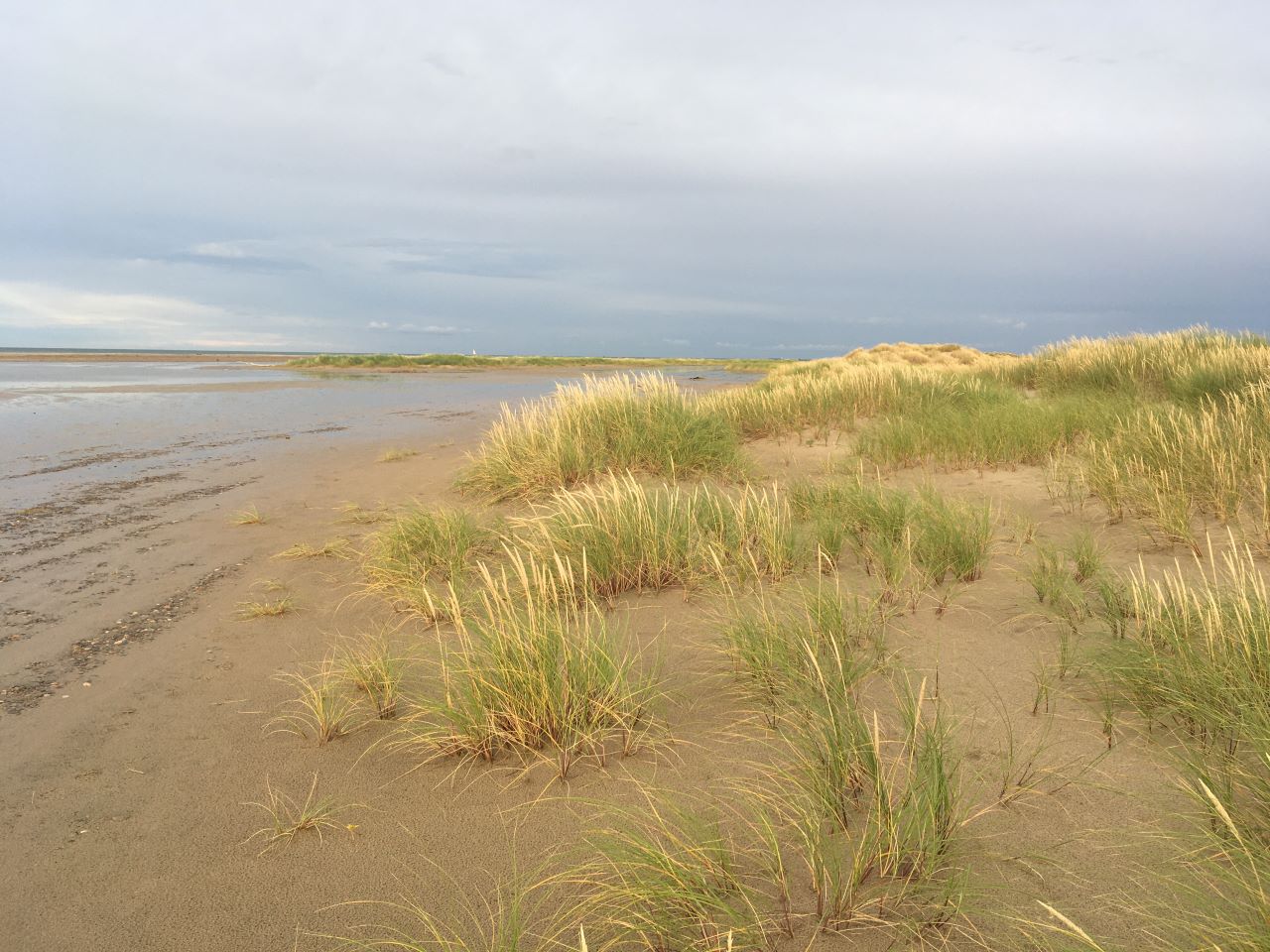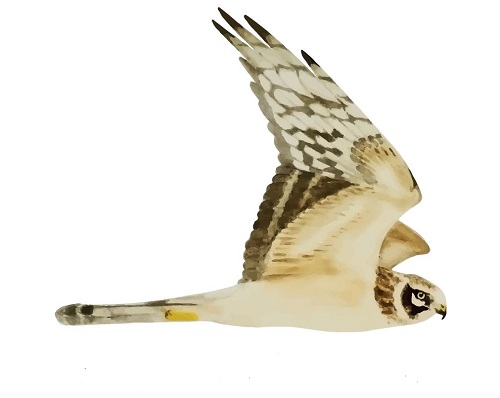Her på Skagen Fuglestations blog bringes korte nyheder i dagbogsformat om hændelser på fuglestationen.
Tornsanger love
Last night, Simon the first lead a night tour at the light house, where visitors got to see some of the nocturnal wildlife around our area, including natterjack toads, bats and some moths. We also had the nets open like the last few days, hoping for either storm petrels or nightjars, or both. On one of the net checks the group got to see a nightjar that flew around the nets, so they got a very good view of it – although some might have preferred to have the bird captured in the net so they could see it up really close, it was still a very nice bird to observe.
No birds caught again all night.
Experienced followers of bird migration may know what is needed now: a change of weather, meaning mostly a change of wind direction. Especially early in the season, when they are not yet in a hurry, birds do not like to fly against the wind, since it costs them so much more energy. Northerly winds are expected during the next two nights, so we hope that migration will pick up a little. Also with lots of rain in the middle of the country a lot of birds might get trapped around our area, meaning we might catch more than usual. On the other hand, seeing how little accurate weather forecasts were these last few days, the rain might also come north and we will not get any migration again...
Since last night it did rain almost everywhere apart from Skagen, no migration happened, or very little anyway. At the ringing this morning at Kabeltromlen then, Simon junior, Benjamin, and me, again, had only local birds. After all the whitethroats we ringed already, it is amazing that we still catch so many without rings. On the other hand, it is also good that we keep recapturing the ones that already have a ring on, because, for one, it means they are still alive (up to 90% of juvenile birds die within their first five months), but also it gives us a chance to see how they move around, when they start leaving the area, and, especially helpful for our new ringers: it provides a chance to follow the moult and learn to identify the different ages later on.
Today, we actually caught a common whitethroat (tornsanger) that we ringed only a few days ago at Skarvsøen. It is a young bird but apparently already quite adventurous, since it has moved around quite a bit. Mind you, there is a lot more sea-buckthorn around Kabeltromlen than at Skarvøen, because the dunes here are higher and it is generally a little drier. All the Sylvia species currently feed almost exclusively on the berries of this bush. It is also the food they use to put on fat for their migration later on, however, first they have to finish their moult.
Of course, they are also very pretty birds:

The other two Sylvia species (lesser whitethroat/gærdesanger and blackcap/munk) are also amnog the very common local breeding birds and on top of our current list of species caught most often.
Benjamin has been out ringing with us for the last time during these holidays, since soon he has to go back to school. But he noticeably improved his skills both in identifying birds and doing the recording for us, so we really look forward to have him as a "real" volunteer next year, when he is 15 and therefore old enough to get a trainee ringing license.
Sean, although he stayed up all night, went out in the morning in the hope of seeing loads of shorebirds and migration going on at the tip. He soon gave up, though, and settled to sleep instead.
At Grenen beach, the shorebirds have remained more or less constant over the past few days, quite enjoying themselves in the many puddles the rain has left behind. Also there are red-throated divers (rødstrubet lom) resting in the water very close to the shore. This species is breeding in Sweden and Norway and the birds we observe now are mainly second-year birds, that do not breed yet. Some of them have their very pretty breeding plumage, they may also be older birds that did not find a mate or for other reasons chose not to breed this year.
Because lately the light has been so beautiful in the cloudy evenings, here are a couple of pictures of last night’s sunset out at the beach at Grenen.


Ringing (Kabeltromlekrattet)
Munk (Blackcap) - 2
Tornsanger (Common Whitethroat) - 9
Gærdesanger (Lesser Whitethroat) - 3
Gransanger (Chiffchaff) - 3
Blåmejse (Blue Tit) - 3
Lille Gråsisken (Redpoll) - 1
Total: 21
People: Seán Walsh, Martina Hillbrand, Simon Kiesé, Simon S. Christiansen, Lisa Vergin Benjamin Bech, Lise, Tine and Elinor
A link to today's observations from volunteers and local observers.



